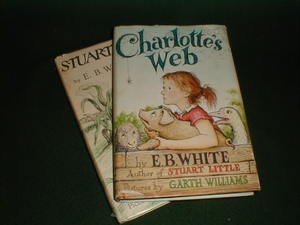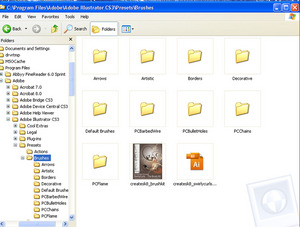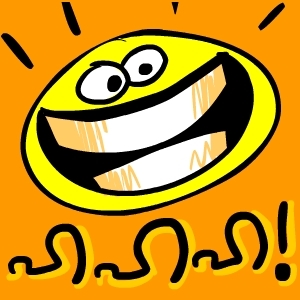Most children’s book collections begin with a few beloved volumes from the collector’s own childhood. Searching children’s literature for similar books is usually an act of love but can take time and effort. It helps to have a plan to guide the seach. Here are five methods collectors use to build from early favorites to a focused collection
COLLECTING CHILDREN’S BOOKS BY ILLUSTRATOR
This is a popular way to collect In children’s literature, illustrations are often preferred to text.
Buying every beautifully illustrated children’s book in sight is not difficult and will yield a house full of pretty books in no time but the books will not be connected. Most collectors narrow it down at least to the point of choosing a few favorite illustrators and looking for the work of those artists. Many choose only illustrators from a particular era or genre.
A lifetime can be spent collecting Golden Age illustrators such as Arthur Rackham, Jessie Wilcox Smith, N C Wyeth, Howard Pyle, Edmund DuLac, Kay Nielsen and Walter Crane.
Art Deco illustrators such as Fern Peat Bisel and Mabel Lucie Atwell are also popular.
There are authors who illustrate their own stories: Antoine de Saint Exupery, Beatrix Potter and Maurice Sendak (sometimes).
There are famous author/illustrator partnerships: A.A. Milne & Ernest Shepherd, Lewis Carroll & John Tenniel, Kay Thompson & Hilary Knight, E.B. White & Garth Williams.
There are even renowned animal illustrators: C.W Anderson, Marguerite Henry, Paul Brown and Cecil Alden.
There are way too many illustrators to come up with even a good partial list here but delving collectors will discover their own links from one favorite artist to another.
COLLECTING VARIATIONS OF THE SAME CHILDREN’S BOOK
This is a unique way of collecting that works especially well for those obsessed with one particular classic. The idea is to collect every possible edition of the desired book in every known translation with pictures by as many different illustrators as can be found.
Alice in Wonderland is frequently collected this way. The Lewis Carroll classic has been translated into dozens of languages, illustrated by scores of different artists and is constantly being brought out in new editions. There are enough variations on this book to fill a library. Of course, collections built around one book eventually cry out for a first printing of the book and that can be difficult and expensive. In the case of Alice in Wonderland, it’s necessary to either steal a first from a museum or settle for a costly English second printing or an expensive Appleton Alice.
The Brothers Grimm and Hans Christian Anderson are also collected this way. So is The Little Prince. Reynal and Hitchcock released their editions of the Little Prince bound in seven different colored cloth boards. Rabid collectors happily spend years looking for each of those seven early printings.
COLLECTING AWARD WINNING CHILDREN’S BOOKS
Most collectors prefer only books that have won one of the more prestigious awards. It’s common to seek all the books that have won a particular award.
There are many prizes given for children’s literature but the two American biggies are the John Newberry Medal and the Raymond Caldecott Medal. The Newberry is awarded to writers and has been given 86 times. The Caldecott is awarded to illustrators and has been given 69 times. Many collectors hunt down the 155 books that have won these awards.
The ABBY (awarded by booksellers), The Hans Christian Anderson (an international award for a body of work) and The National Book Award for Young Peoples Literature are some of the other prestigious prizes that collectors watch.
Finding first printings of books that have won major awards can be difficult and expensive if the award winners are new artists with small first editions. Collectors who don’t require first editions have it easier. Major awards guarantee many publishings and medal winning books rarely go out of print. While looking or saving up for rare first printings, collectors can keep busy second guessing who the new winners will be and snapping their works up before the prizes are awarded.
COLLECTING CHILDREN’S SERIES BOOKS
The most famous recent children’s series will soon come to an end. The Harry Potter series will close in July with a seventh book. Harry has had a short run compared to some of his vintage counterparts. The Hardy Boys have a hardback and paperback total of 190 different stories and the Nancy Drew series numbers a total of 175 different stories.
Nancy and The Boys came from the most famous stable in children’s publishing. They were
Stratemeyer Syndicate books from Grosset and Dunlap. G&D; was part owner and exclusive publisher for all the syndicate’s books until Simon and Schuster bought the rights in 1987 and issued the newer books in paperback. Under pseudonyms, Stratemeyer writers penned The HardyBoys, Nancy Drew, Cherry Ames, Tom swift, The Bobsey Twins and others. Early Grosset and Dunlap children’s series editions are some of the most valuable and avidly sought after books in all of children’s literature.
Other than the Grosset & Dunlap publications, vintage favorites include The Oz books, Anne of Green Gables and its sequels, The Little House On The Prairie and its sequels, Raggedy Ann books and Peter Rabbit books.
Aside from Harry Potter, modern series favorites include A Series of Unfortunate Events, His Dark Materials and Eragon.
There are hundreds of children’s classics with sequels that are worth collecting and for those who search this way, the well never runs dry.
COLLECTING CHILDREN’S BOOKS BY ADULT BOOK AUTHORS
Many a well known author of adult books has tried his or her hand at writing a children’s book. Successful modern writers of adult literature who have published children’s books include Shirley Jackson, Ann Tyler, Ogden Nash, James Clavell and James Baldwin.
I started a little side collection using this method a few years ago. A friend suggested that I add on some children’s books written by not so successful adult authors such as Raoul Dahl and Daniel Handler (Lemony Snickett). He pointed out that “failed” adult writers often wrote superior children’s books. He was right and I did expand to include some of those authors in my collection.
I’m now adding on a few of the relatives of well known writers who also write and illustrate children’s literature. Ann Tyler’s Tumble Tower was illustrated by her daughter, Mitra Modarressi. Thomas Mc Cready’s stories were illustrated by his then wife, Tasha Tudor and their daughter Bethany was also a children’s illustrator. Mabel Lucie Atwell’s daughter became almost as well known a children’s illustrator as her mother. It seems that writing and illustrating children’s books is often a family business and my little collection continues to grow in ways I hadn’t anticipated.
START WITH THE FAVORITE BOOKS OF YOUR CHILDHOOD
These are just five of many ways to enjoy collecting children’s literature. Some are ways that I have used and a few I just thought sounded like fun. The ones I’ve tried have worked well for me and some might also work for you.
Before deciding how to start a collection, go back to the favorite books of your childhood. Determine what it was in those books that spoke to your heart and look for that thing in all of children’s literature. You could wind up using one of the methods touched on here to find your special books or you could come up with a unique and wonderful new way to build your collection.






